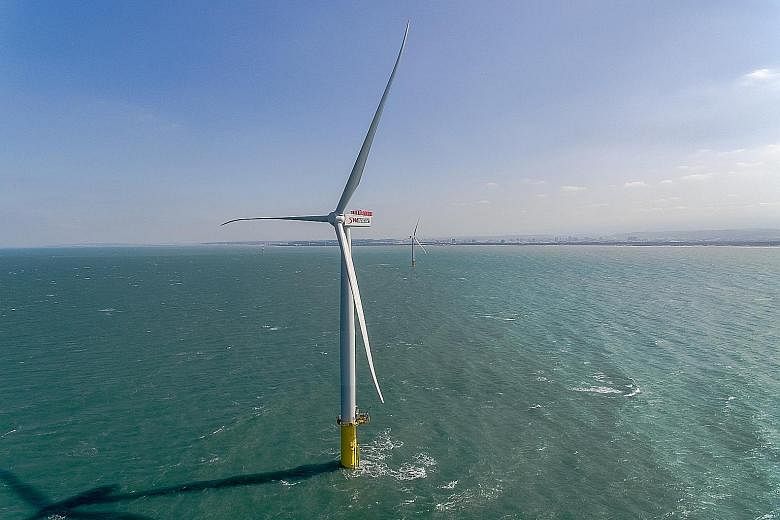You can say the wind is beneath Taiwan's wings as it tries to ditch nuclear energy for renewable power.
Taiwan's first two offshore wind turbines, built on an island in the Taiwan Strait off Miaoli county, look ready to start generating electricity as early as next month.
These demonstrator turbines are part of the government's Thousand Wind Turbines project - it has earmarked 36 zones in the waters off Changhua and Miaoli counties along Taiwan's west coast, for commercial firms to bid for contracts to design and build offshore wind farms.
With average wind speeds of 19kmh whipping through the Taiwan Strait, experts say Taiwan has the best offshore wind resources in this part of the world to produce a stable source of wind energy.
The push for offshore wind power is crucial as Taiwan aims to shut its three nuclear power plants - which now supply about 14 per cent of its needs - by 2025. Taiwan relies mainly on power from coal resources while renewable alternatives such as wind, solar and hydro energy supply about 6 per cent of its power needs.
The government wants to raise the proportion of renewable energy to 20 per cent by 2025, with wind power making up two-fifths of this.
On the island's wind advantage, the Bureau of Energy's senior technical specialist Chen Chung-hsien told The Straits Times: "This is as good as hitting the jackpot in wind energy production as no one else in this region is blessed with such great wind conditions... It would be silly not to take advantage."
Currently, Taiwan's 300 onshore wind turbines produce 16 megawatts of wind power.
With the help of some 1,000 offshore models, the government hopes to ramp up wind power production to 520 megawatts in four years. By 2030, that will go up to as much as 4 gigawatts of offshore wind, which is equal to the power usage of 10 million people a year.
The Bureau of Energy's director-general Lin Chuan-neng, who is overseeing the implementation of Taiwan's renewable energy policy, said the green energy plan seems ambitious but is "not impossible".
"We can aim a little higher as we have the backing of all the government agencies which are committed to weaning Taiwan off nuclear energy and coal as soon as possible," said Professor Lin.
The energy and carbon reduction office was set up under the Executive Yuan, Taiwan's Cabinet, in May to coordinate the green efforts of government agencies such as the Agriculture Council, Ministry of Economic Affairs and Environmental Protection Agency.
"We are trying to cut out the bureaucracy, integrate all agencies to make it as simple as possible for companies to get their licences and documentation done to launch their projects," said Professor Chen.
In October, the Executive Yuan sent draft amendments to the Electricity Act to the Legislative Yuan. The amendments will liberalise the renewable-energy market to encourage the entry of private companies and prevent state-owned Taiwan Power (Taipower) from monopolising the industry.
But the amendments, which still do not allow companies to sell power directly to consumers, have been panned by energy experts as "too small" to make an impact.
National Taipei University professor of economics Wang To-far said during a public hearing of the Electricity Bill that the measures "do too little, too slowly", as Taipower will still call the shots in setting prices and probably charge a premium for renewable energy sources.
Managing director Kao Ju-ping of the Taiwan Renewable Energy Alliance civic group told The Straits Times that Taipower is still able to charge a premium and set the prices for green energy, hence profiting from the green efforts and slowing down the liberalisation of the market. She said the government has to go beyond "half-measures to allow the green energy industry to flourish".

